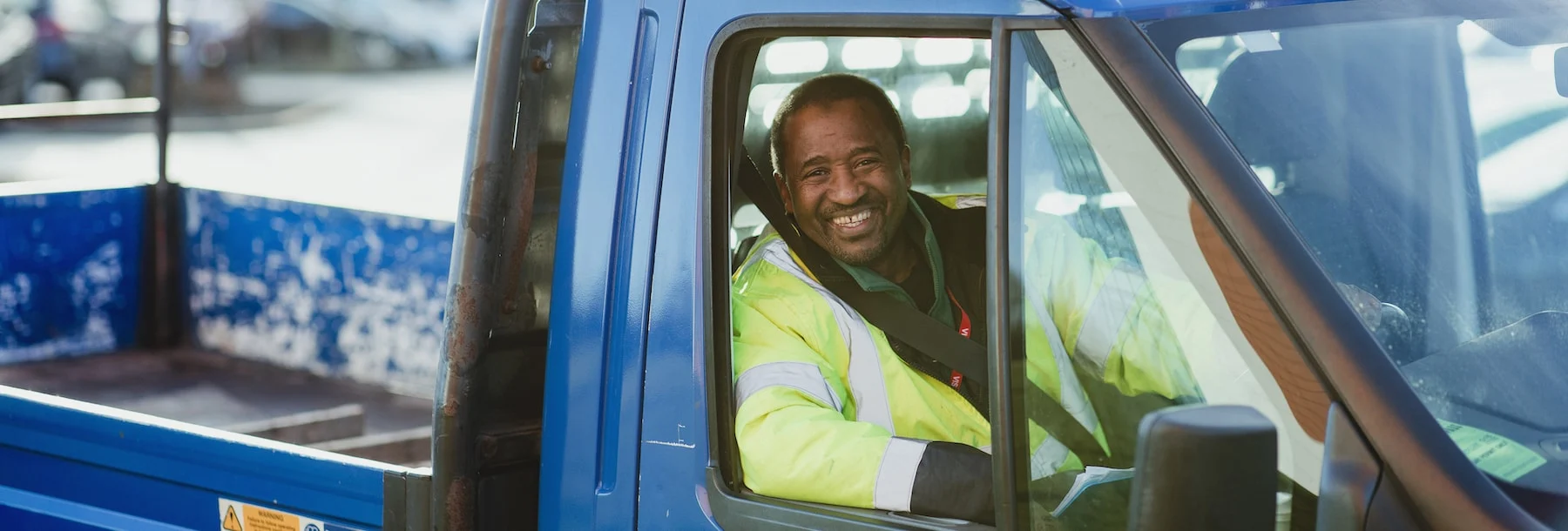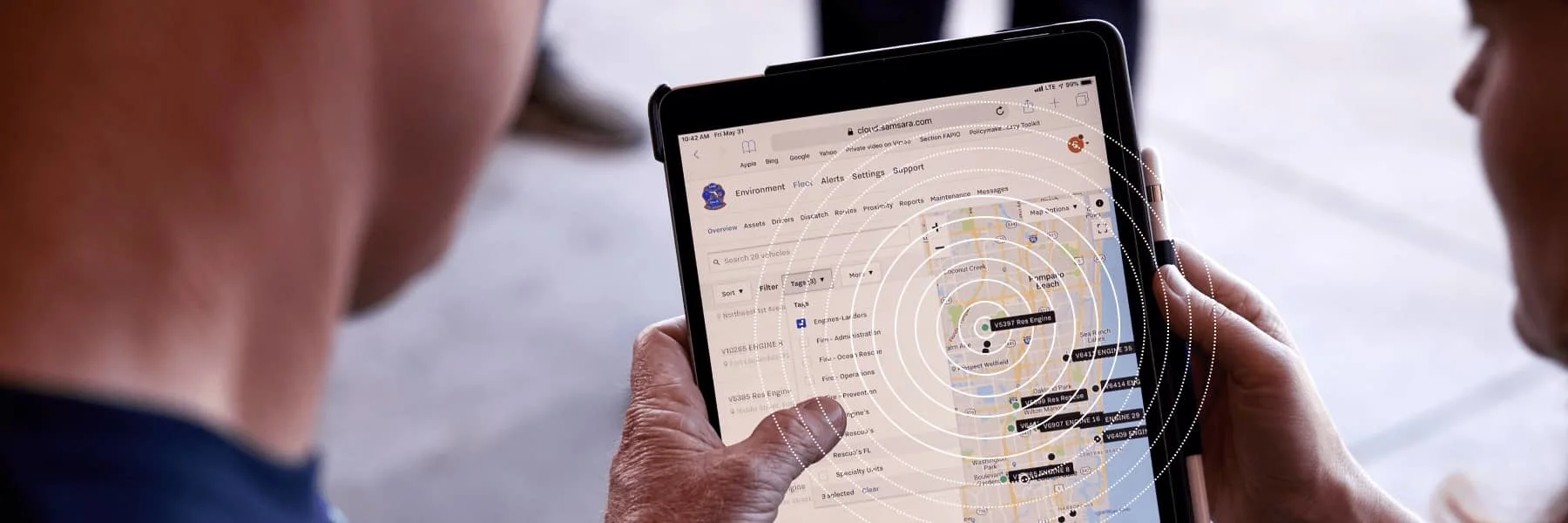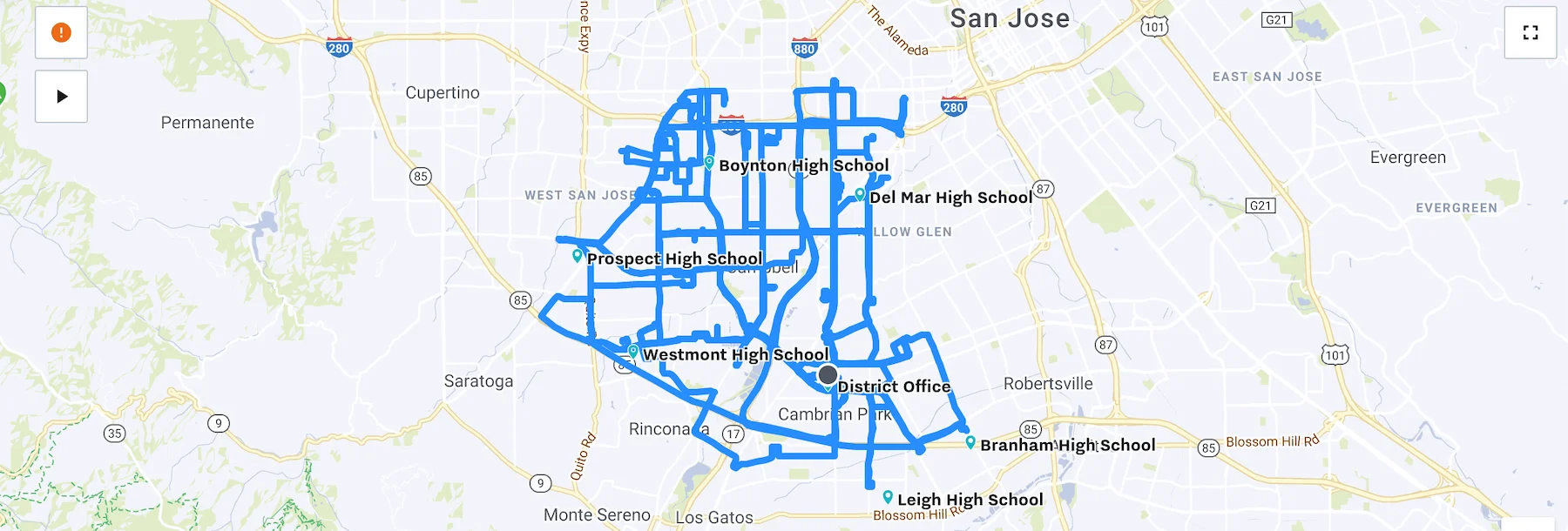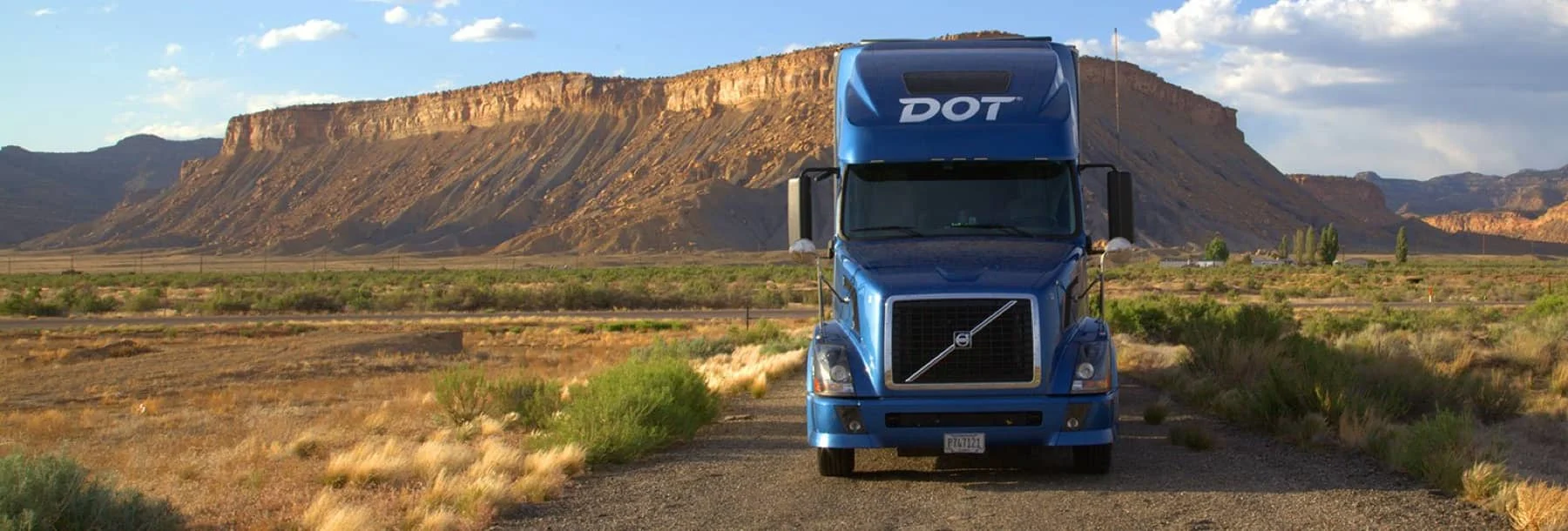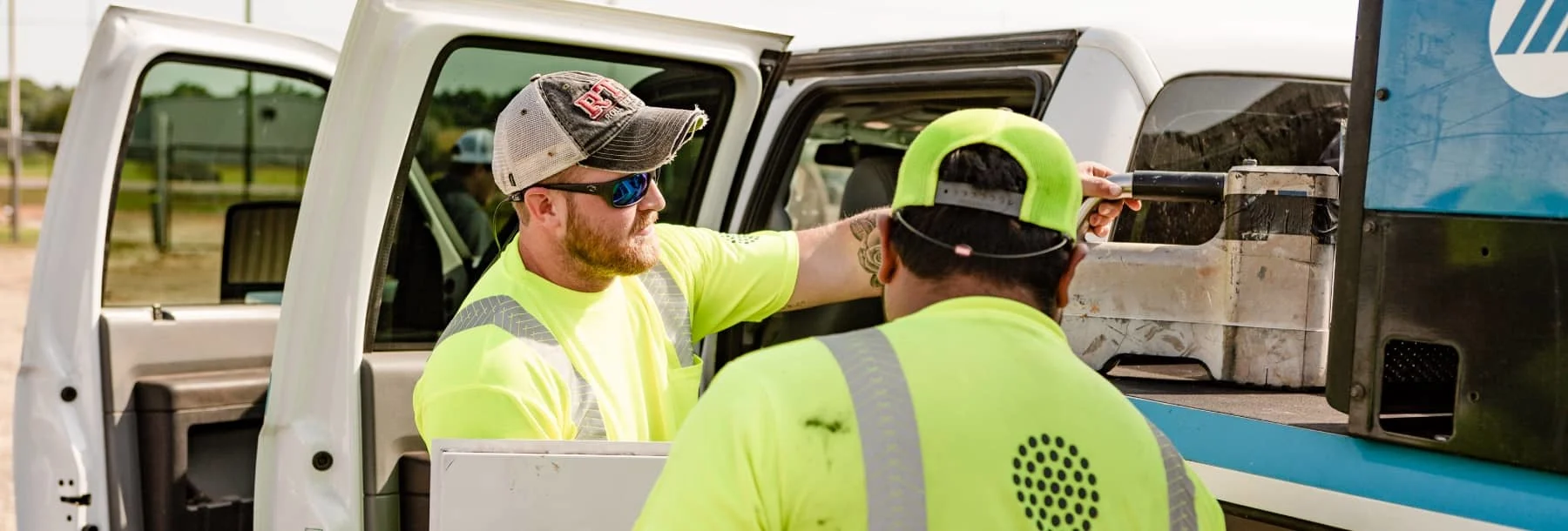Customer Stories
Tips from Sprint Waste: 3 Best Practices for Driver Coaching and Building a World-Class Safety Program
October 1, 2020

Manager, Content Marketing
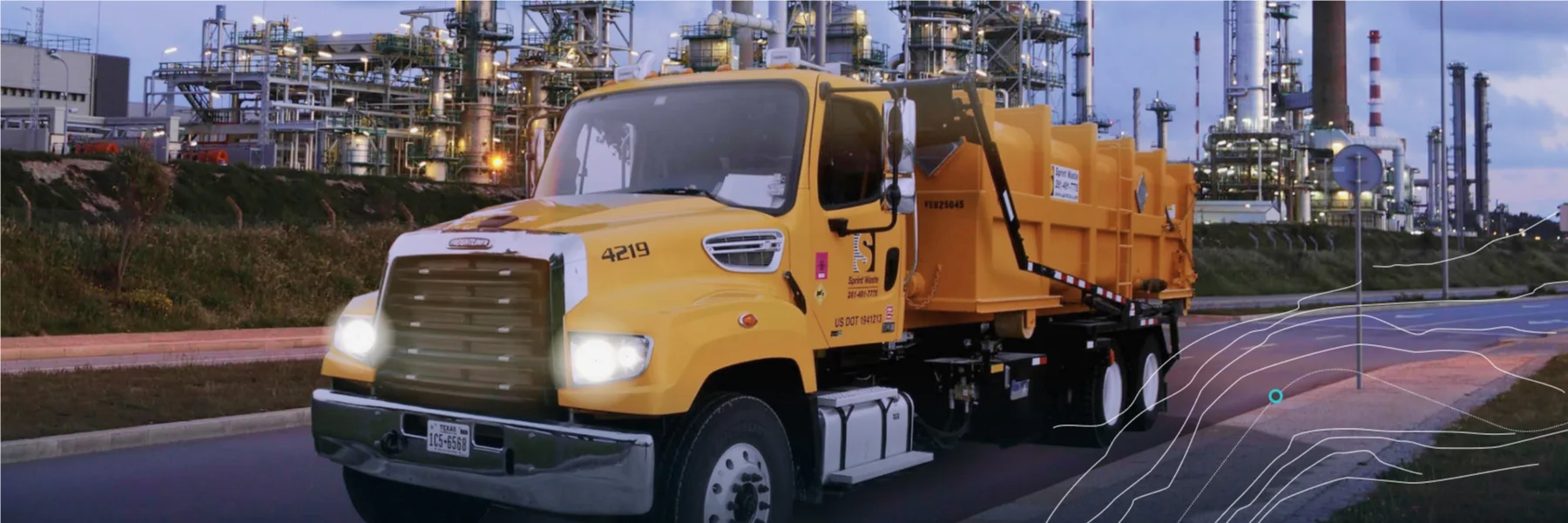
Headquartered in Houston, Sprint Waste Services is a waste transportation and container rental company that supports the industrial and construction industries across the Gulf Coast. With more than 14 locations, 400 vehicles, and 300 drivers who collectively clocked 19 million miles last year, safety is a top priority for the company.
Leading the charge is President Dave Nelson. Since joining Sprint Waste in 2012, Nelson has overseen significant safety improvements—even as the business more than doubled in size. In early 2019, Sprint Waste partnered with Samsara to implement dash cams for the first time, successfully getting buy-in from more than 300 drivers and 60 owner-operators they work with.
Over the years, Sprint Waste has built a world-class safety program that leverages creative tactics to keep drivers engaged, while also driving impactful cost savings across the enterprise. They saw incredible results from their safety program in 2019, including:
58% decrease in speeding
50% increase in miles per safety incident
52% exoneration rate from all accidents in 2019
$500,000 saved in recent insurance renewal and estimated millions of dollars saved in avoided litigation costs
25.6% driver turnover rate, more than three times lower than the industry average of 80-90%
Due to these impressive achievements, Sprint Waste was recently named the winner of the 2020 Samsara Top Fleet Award for Safest Fleet. We sat down with Nelson to learn the secrets of his success and share best practices with the Samsara community. Here are his top three tips for building a world-class safety program.

Dave Nelson, President of Sprint Waste Services
1. Lead by example
Before rolling out dash cams across our fleet in 2019, we actually debated whether or not to implement dash cams for several years. Like many fleets, our drivers are absolutely central to our business—and we were concerned about driver buy-in. We had a lot of drivers who had bad experiences with dash cams at other companies and were (understandably) very skeptical of having a dash cam in their truck.
We knew we had an uphill battle to get them to understand that the dash cams are not Big Brother, but are actually in their best interest. And I knew from experience that showing is more powerful than telling. A few years prior, we implemented a no cell phone policy for our drivers—meaning no cell phones, no Bluetooth, nothing in use while in the vehicle. Before we implemented that policy, I personally adhered to it for six months. That way, I could honestly say to our team, "Look, I can do it. You can, too."
I wanted to do the same thing with dash cams. Before rolling out the dash cams fleet-wide, I installed one in my own personal truck. Our management could see my own driving behavior and coach me when I did something unsafe. Sure enough, two weeks after installing the dash cam, I was on a personal vacation. I stopped to get a Coke, and I had a text message from our safety manager saying, "Slow down, Dave!" The drivers found this funny when I shared it with them, but it also made a point. Starting from the top, our owners and our leadership team were able to demonstrate our commitment and goodwill to our drivers.

There are a few other ways we lead by example at Sprint Waste. Our owners and our leadership team truly think safety first. Every Friday, our entire leadership team has a standing safety meeting to discuss the latest safety happenings across all 14 of our locations. It's an opportunity for everyone to hear what's happening in different parts of the business. We can learn from each other, and we can ensure management alignment on new policies and procedures.
Furthermore, all of our operations managers view safety as a key part of their job. They're trained in safety, and half of their incentive compensation is based on safety performance. That has helped set a very positive tone across our entire organization.
2. Combat complacency with creativity and discipline
When it comes to safety, it’s easy to get complacent. Drivers often have a similar routine each day. It’s easy to settle into a pattern and not pay as much attention to the details. But complacency can be really detrimental to safety. We want our drivers to always be fully alert, fully present, and focused on the task at hand—whether that’s doing a thorough pre-trip inspection or moving safely from point A to point B. The question is: how do we keep safety top of mind every single day?
At Sprint Waste, we’ve found that it’s all about blocking and tackling. First, we identify the critical safety best practices we want to reinforce. Then, we use creativity, consistency, and discipline to keep those best practices top of mind. Here are a few of the creative tactics we’ve found to be incredibly effective at Sprint Waste:
Mock Level 2 inspections: At each of our locations, we routinely pull over trucks and do mock inspections. This ensures that our drivers know what to do and are always prepared in case of a real DOT inspection.
Sprint 360 program: Our Sprint 360 program encourages drivers to go above and beyond the required pre- and post-trip inspections to ensure vehicle safety. Any time a driver gets out of his or her truck, we ask that before they get back in, they walk around the truck and do a full 360 degree inspection. It only takes a couple minutes—but this program has helped us avoid multiple incidents.
Hidden red tags for pre-trip inspections: During the overnight shift, one of our mechanics will put red tags somewhere on a few of our trucks. The next morning, when the driver is doing his or her pre-trip inspection, they know to be extremely thorough because there might be a hidden red tag. If they find the red tag, they're successful. If not, then we have a great learning opportunity.

We ensure discipline and accountability by keeping a Safety Calendar, a schedule of these activities for each of our 14 locations. If you don't put a schedule together, these things just don’t happen; no one is going to put red tags on a truck at four o'clock in the morning unless that's something they're accountable for. The Safety Calendar allows us to assign responsibilities to people at every location and make sure we do all the things we know we need to do to be successful.
3. Use video as a powerful storytelling tool
When we first installed dash cams, I originally thought it would simply provide better visibility into unsafe behaviors, like harsh braking, accelerating, and turning. But the dash cams have turned into an amazing tool that have gotten a lot of buy-in from our drivers. The key is the footage they provide; high-quality video is an incredibly powerful tool for garnering buy-in, coaching and rewarding drivers, and demonstrating your commitment to safety to customers.
Very soon after we started installing the cameras, we had an accident that was not our fault and we were exonerated at the scene. We showed that video at every safety meeting, and light bulbs went on. After seeing how the footage could exonerate them firsthand, our drivers were fully bought into the idea of dash cams.
We’ve also found that dash cam footage is an incredibly powerful coaching tool—for both constructive feedback and positive recognition. Our drivers have to safely navigate traffic in cities like Houston and Baton Rouge every day (which is very challenging). And on top of that, they could be carrying hazardous waste behind them, so safety is absolutely paramount.
Now, we have footage of coachable moments that we can use for both 1:1 coaching and during weekly safety meetings and accident review calls. We’ve shown footage of near misses, incidents where another vehicle ran a red light, and countless other scenarios. That's been really effective because the videos are of our own trucks and our own drivers. People like seeing themselves, and the lessons learned are more powerful than with standard safety videos. When we show videos of a particular situation—like changing lanes or sideswipes—during a safety meeting, we now see an immediate improvement in those types of situations in the following weeks and months.
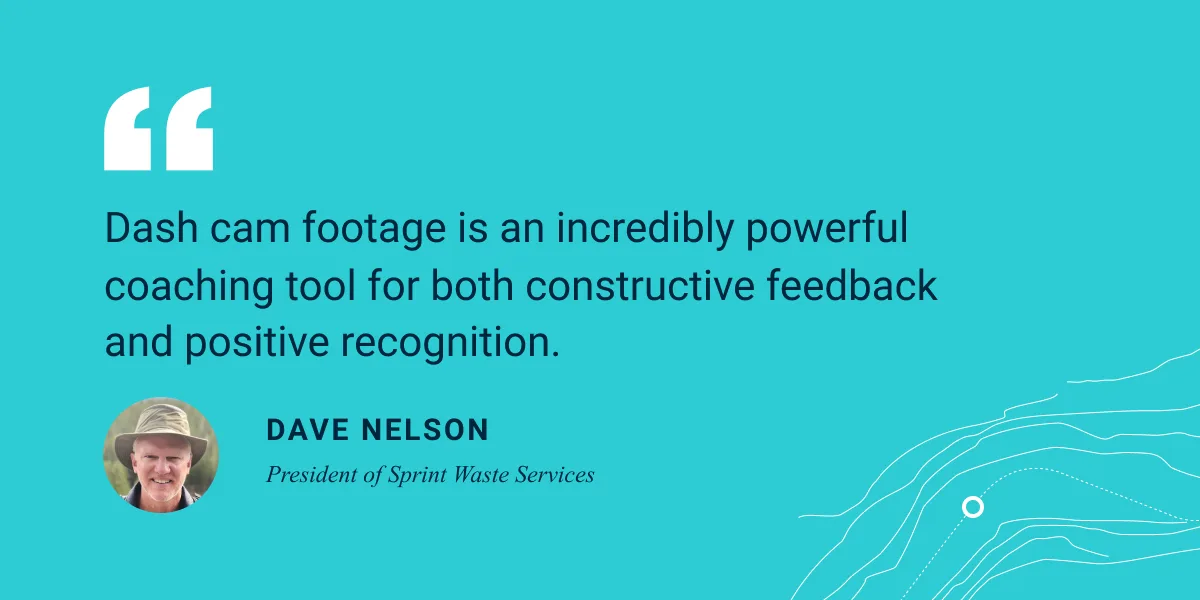
We also use videos to recognize our drivers for great defensive driving. As the president of the company, every Monday I send out an email to all of our employees. The purpose of that email is to give an update on the company. Since we implemented Samsara, I now include a “video of the week,” too. The other week I sent a video where our driver was behind another truck, and that truck had a blowout that went into the median (and almost into oncoming traffic). Our driver did everything right, and we wanted to highlight that to our whole team. The message was, “Don't drive right next to a big truck. Always give them room.” I often get feedback on those emails from employees who say, “Now I'm much more aware of that type of situation.”
We've also been able to use dash cam footage with our customers to show them how we're using technology to make us safer. In fact, one of our customers had a ban on cameras within their facility—but once they saw how it actually helps us operate safer, they made an exception for us. The videos have truly benefited our drivers, while also making our customers feel safe about doing business with us.
Get more best practices from Top Fleets
The 2020 Samsara Top Fleet Award-Winners stand apart as leaders in their fields, building tech-forward programs that deliver considerable impact for their organization and community. Samsara is proud to partner with organizations like Sprint Waste.
Want to get more fleet management tips from best-in-class fleets like Sprint Waste? Access our on-demand webinar recording from Inside Look: Secrets from Top Fleets. This exclusive digital event gives you direct access to four of our most accomplished customers—ArcBest, GP Transco, Sprint Waste, and Athens-Clarke County—recent winners of the Samsara 2020 Top Fleet Awards. During the 90-minute conversation, leaders from these fleets share insider tips for leveraging Samsara to drive next-level efficiency and safety.
<a id="blog-inline-1" href="https://www.samsara.com/webinars/inside-look-secrets-from-top-fleets?utm_medium=blog&utm_source=blog&utm_campaign=event_long-haul-blog-series" target="_blank" title="Watch now" class="btn btn--blue primary-btn">Watch now</a>


